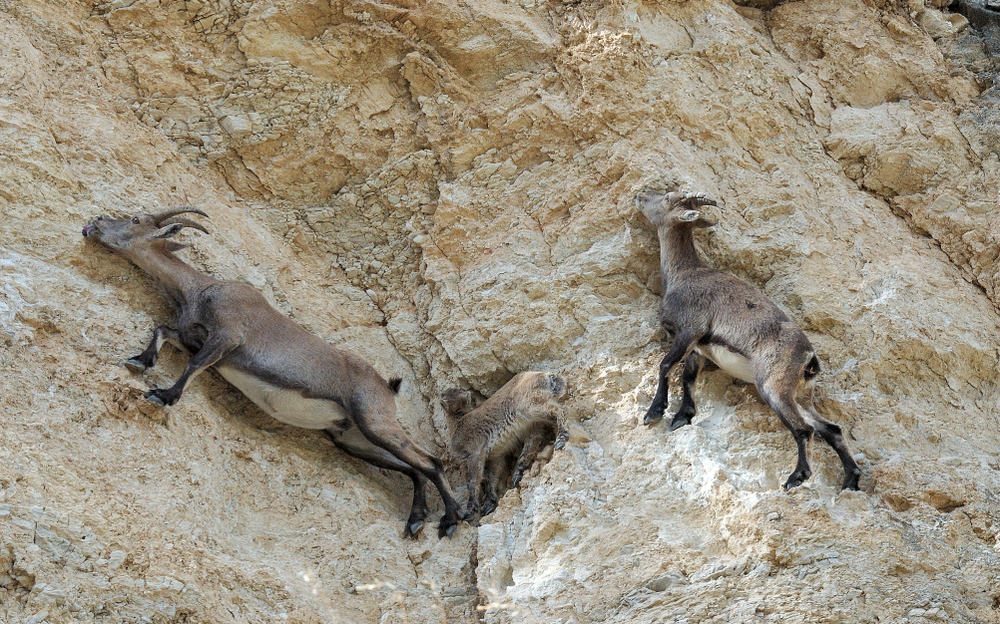All animals, including humans, crave the taste of salt. It’s also an essential part of life, because this essential mineral plays an important role in regulating the body’s physical processes. But this may have you wondering, “Where do wild animals get salt?” The answer to that question is surprisingly complicated.
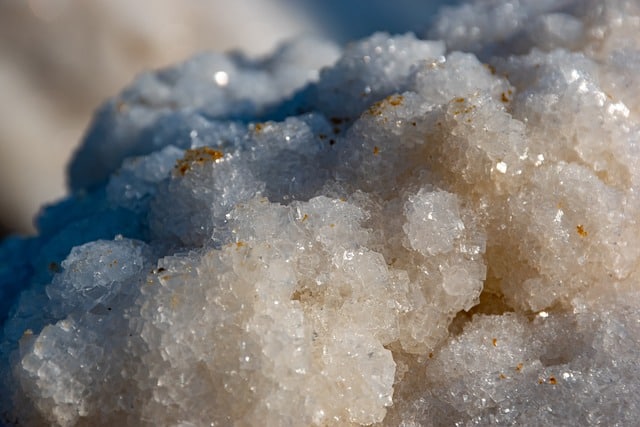
First, What Exactly Is Salt, and What Does It Do?
Salt, or sodium chloride, is a simple chemical compound made out of sodium and chlorine atoms. Saltiness is one of the five basic tastes: saltiness, sweetness, sourness, bitterness, and umami. (Umami tastes are savory, meat-like tastes.) Most people use it in the form that comes in a salt shaker to season their food or in the form of rock salt to melt ice. Rock salt is the same thing chemically as table salt (though mixed with other trace elements) and both are different from sea salt, which is extracted from sea water. That’s potassium chloride, a completely different chemical, though it does taste similar.
Salt is one of the essential nutrients. The body can’t do without salt. It uses salt to regulate fluid balance, which is important for maintaining a healthy blood pressure, keeping the body’s cells filled with just the right amount of fluid, and the proper functioning of several internal organs. Both the sodium and the chlorine in salt are needed, with the sodium being needed for the proper firing of neurons in your brain. Sodium helps all cell types regulate the amount of extracellular fluid flowing into the body’s cells. When salt concentration in the blood is too high, even just 8 per cent too high, cells get dehydrated and damaged. Low concentrations of salt cause cells to take in too much water, making them swell up and take damage.
Salt also plays an important role in regulating hormones, so it has an important effect not only on mood but also in how well the body responds to stress. Some people even believe that moderating the salt content in your diet can be an effective form of natural birth control.
The negative impacts of a bad dietary salt balance are many. Too much salt in your diet leads to strokes, heart disease, and kidney damage. It can also impair the functioning of your immune system. Too little salt leads to confusion, lethargy, and other mental effects.
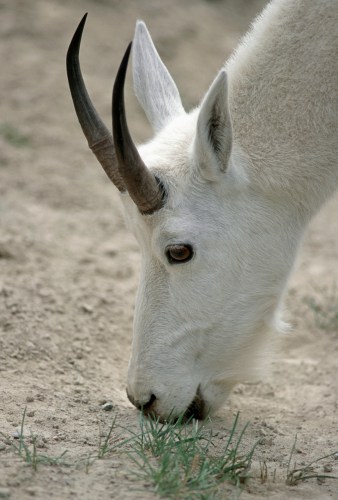
Mineral Licks
Mineral licks are an important source of salt for many wild animals. Some mineral licks are natural salt licks, naturally occurring high concentrations of salt with other important trace minerals that animals need in small amounts. This is one of the best ways for wild animals to get salt. Wherever these deposits occur, animals gather to lick them to get the salt they need. There is even a herd of elephants that spends a significant amount of time in giant underground caves, to get at the mineral licks there. However, mineral licks are kind of rare, so most animals need another source of salt.
Farms, zoos, and game preserves frequently use artificial salt licks to make sure their animals stay healthy. These usually come in the form of simple salt blocks, salt in block form, set out where animals can find them easily. These man-made salt licks only serve a relatively small amount of animals, though.
The Effect of Salt Licks on Animal Behavior and Distribution
Salt is necessary for the healthy development of young animals and the overall fitness of adult animals. Animals’ natural habitats are, therefore, frequently determined by the presence of salt licks. If these licks are rare, high concentrations of different species of animals will sometimes squeeze into a small area to stay close to them. Animals will travel great distances to get salt, but they prefer not to if they can at all avoid it.
When local laws allow the practice, hunters frequently set artificial salt licks out in the forest, and sometimes this is the reason deer congregate in certain areas. They do this to help deer numbers remain high in areas where hunting is legal.
This is a naturally occurring phenomenon, as well. Scientists on a research project in Malaysia studied salt licks in the Royal Belum Rainforest. They discovered that the incredibly diverse and complex ecosystem is literally arranged around naturally occurring salt licks. Many animal trails lead to them. This universal popularity of salt licks means that populations of most animals center on them. These salt licks actually have a lot to do with these animal populations’ long-term stability. And, because of this, the territories of apex predators are centered on these salt licks as well. While the study area was just this rainforest, the results are no doubt the same everywhere.
It is clear that a study of animals’ behavior regarding salt is a key part of understanding the behavior and distribution of wild animals in general. It’s necessary for understanding domestic animals, too. Knowing the necessary salt levels to include in a milk cow’s diet at different stages is an important part of milk production, for example.
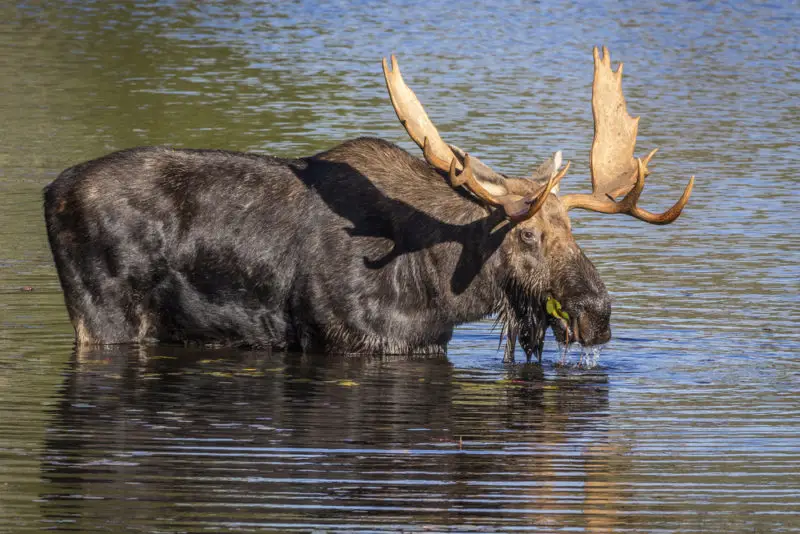
Plant Sources
Salt is a natural part of soil pretty much everywhere, though it comes in higher concentrations in some locations than in others. The land in and around salt marshes, for example, is particularly full of salt. And because plants grow in the soil and get their nutrients from it, they also draw some of the salt out of the soil and into their tissues. So a wide assortment of animals with plant-based diets ingest that salt when they eat the plants, giving them enough salt to avoid health problems.
Animal Sources
Because plant-eating animals eat a lot of plants, they concentrate the salt from the plants in their bodies. Natural predators take advantage of these high salt concentrations when they eat their plant-eating prey, getting the sodium intake they need from them.
Water Sources
Some animals get all the salt they need from their water consumption, as many animals that live in salt marshes do. Fiddler crabs, for example, spend much of their time immersed in the brackish water of these marshes, breathing it in and out. They get all the salt they need that way. A variety of other animals do as well. Small animals find it easier to get their salt requirements this way than large animals do.
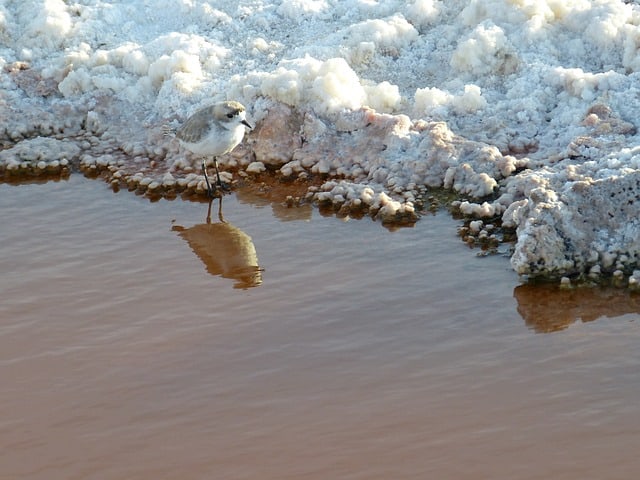
Birds and Salt
Some birds will get their salt by licking any nearby deposit of mineral salts. Those that can’t will often eat salty clay or soil and get the little salt and other mineral intake they need from it. This isn’t as odd as it sounds, though, as bird will sometimes do this anyway to aid in their digestive processes. Some birds get their salt from the stuff they find in bird feeders, too. Many bird species are known for their salt-avoiding behavior, though, because they need so little and get it in their natural diets.
Salt Regulation in Wild Animals
In fact, mother nature seems to have made salt-avoiding behavior a natural part of most animals’ behavior, at least in certain circumstances. It has to be because a high-salt diet has some serious negative health consequences. Wild animals have to have some instinct that tells them to avoid high concentrations of salt in order to avoid these consequences. You see animals drinking fresh water, but never sea water, for example. Animals know to avoid extra salt. Scientists who study molecular biophysics, such as Dr. Charles Zuker and Yuki Oka, have studied this phenomenon, as was related by Columbia University Medical Center and the National Institute of Dental and Craniofacial Research.
Through the efforts of Dr. Zuker and Dr. Oka, who is a postdoctoral fellow working in Dr. Zuker’s lab, we now know a great deal about the different taste receptor cells and how they affect wild animals’ behavior concerning salt. Wildlife biologists have observed that most animals are naturally attracted to low-salt tastes and naturally repelled by high-salt tastes. So they assumed that there were two different taste receptor cells for salt: low-salt receptors and high-salt receptors. However, scientists found no evidence of different cells for tasting salt.
As it turns out, there is only one kind of taste receptor for salt. The aversion pathways for high salt concentrations make use of other taste receptors, oddly enough. High concentrations of salt activate sour-sensing cells and the cells responsible for the bitter taste. The activation of these taste receptors creates an aversive reaction to the saltiness. Between these two responses to the salt taste, wild animals adjust water intake and selection of food sources to keep an optimum salt balance in their bodies and satisfy their nutritional needs.
There are even commercial implications of the work. Scientists could one day use this information in the development of taste modulators that keep people from eating too much salt.
How Did Early Humans Get Salt?
Although most people today find salt in stores and restaurants, or on potato chips, people living before the modern industrial age had to depend on many of the same sources that wild animals did. Native Americans, for example, practiced a variety of methods of salt production, extracting it from salt springs and ocean water, extracting it from plant ashes, extracting it from salty sands, and mining rock salt. Early settlers adopted many of these same practices.
Final Thoughts
Salt plays an important part in the diet of wild animals. If you want to understand wild animal behavior, you have to understand the locations and sources of salt in their environments.
Recent Posts
The only venomous snakes in Washington State are Northern Pacific Rattlesnakes. The Northern Pacific Rattlesnake (Crotalus oreganus oreganus) is a sub-species of the Western Rattlesnake. Anyone...
Skunks are not classified as true hibernators. But they go into a state of torpor when the weather gets cold. Skunks are light sleep hibernators, along with opossums, bears, and raccoons. ...

